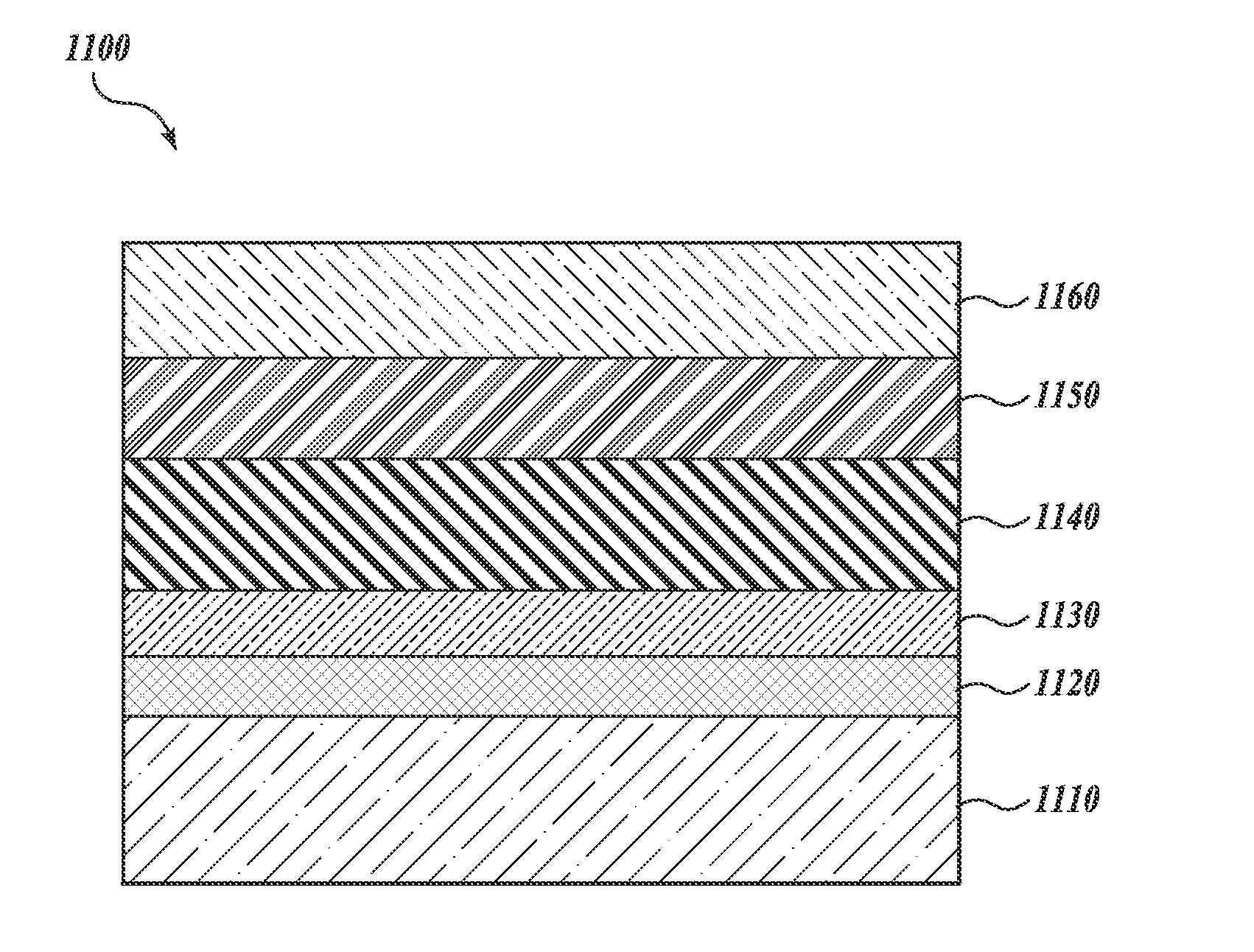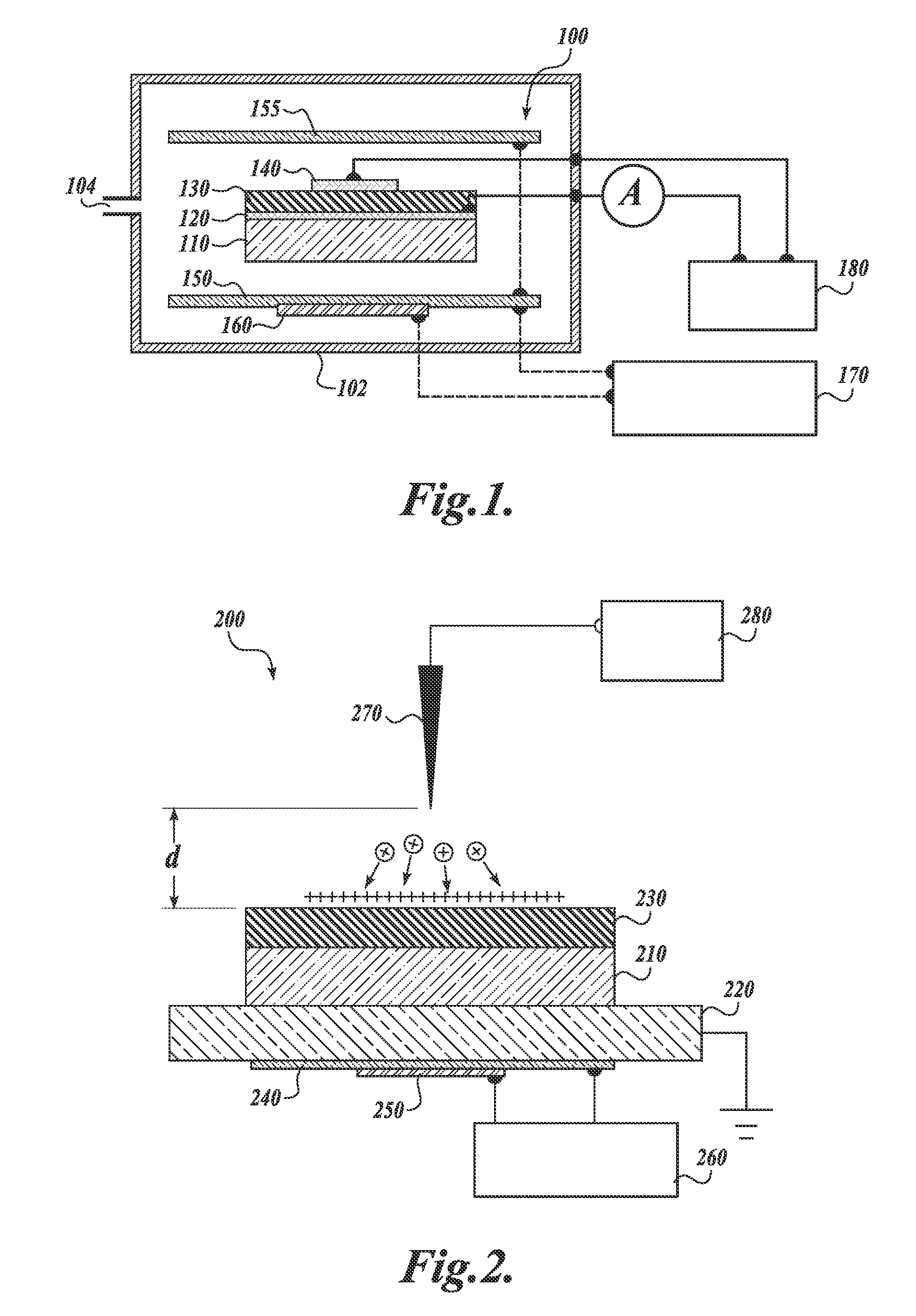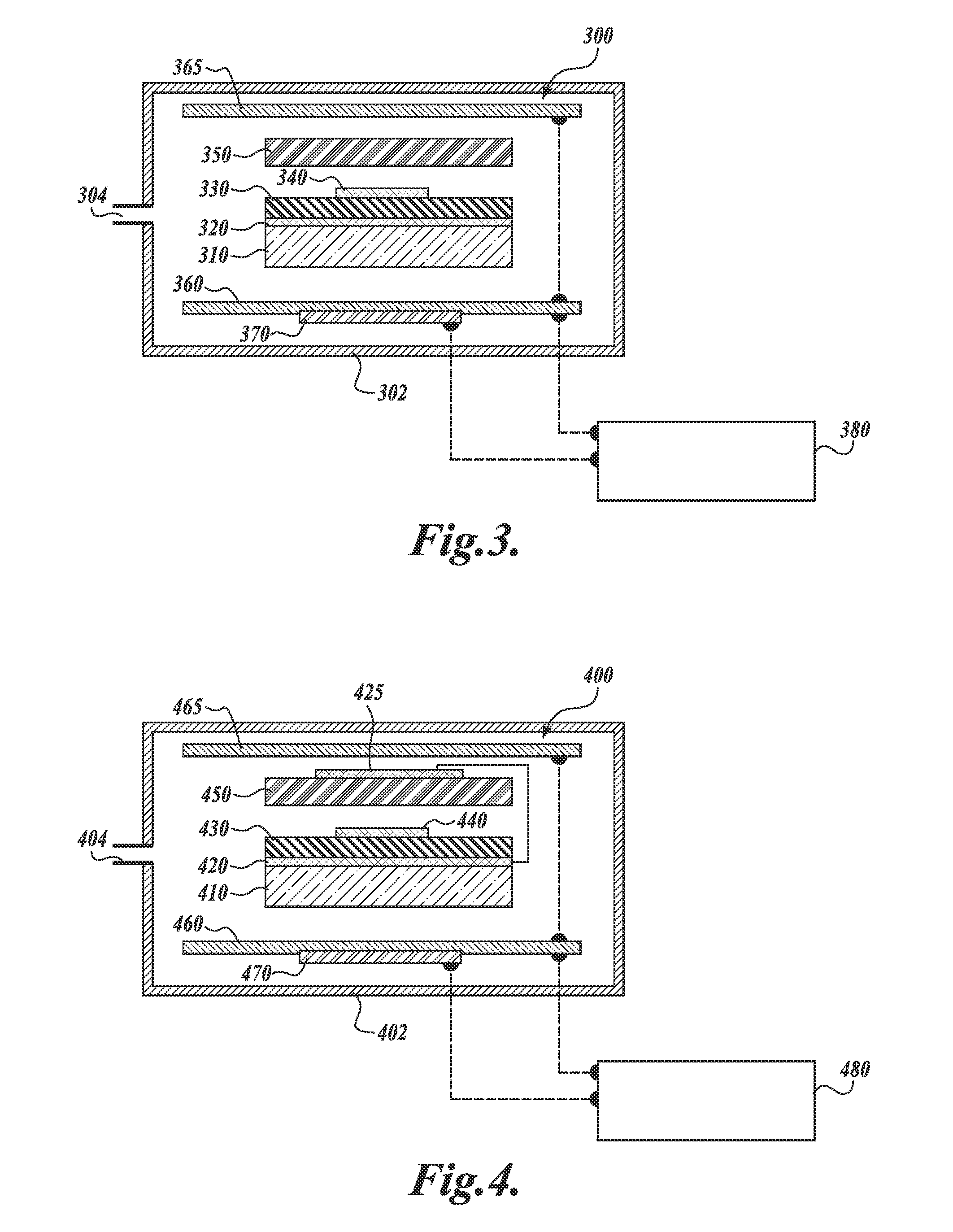Poling structures and methods for producing electro-optic activity in organic nonlinear optical materials for electro-optic devices
a nonlinear optical material and electrooptic technology, applied in the direction of optical waveguide light guide, instruments, nanotechnology, etc., can solve the problems of large destructive current densities at pinhole defects, large optical nonlinearities, and inability to measure the poling field strength. simple, the effect of large eo activity in organic nlo materials
- Summary
- Abstract
- Description
- Claims
- Application Information
AI Technical Summary
Benefits of technology
Problems solved by technology
Method used
Image
Examples
Embodiment Construction
[0031]The invention provides to a new approach to achieve large EO activity in organic NLO materials and to address the challenging issues encountered in the commonly adopted poling methods, such as contact poling and corona poling. It has been discovered that the polarization change of noncentrosymmetric crystals can provide electric field as high as 108˜10 V / m near its surface (G. Rosenman, D. Shur, Ya. E. Krasik, Y. Dunaevsky, J. Appl. Phys. 88, 6109 (2000); H. Riege, I. Boscolo, J. Handerek, U. Herleb, J. Appl. Phys. 84, 1602 (1998)). In the devices and methods of the invention, the effective field generated from controllable polarization change of polar dielectrics is used to produce non-centrosymmetric order of NLO chromophores, leading to materials having large EO activity. Electrostatic field generation and induced electron emission results from the polarization of polar dielectrics by deviation from the equilibrium state under pyroelectric, piezoelectric effects, or polariz...
PUM
| Property | Measurement | Unit |
|---|---|---|
| reflectivity | aaaaa | aaaaa |
| electric field | aaaaa | aaaaa |
| transmittance | aaaaa | aaaaa |
Abstract
Description
Claims
Application Information
 Login to View More
Login to View More - R&D
- Intellectual Property
- Life Sciences
- Materials
- Tech Scout
- Unparalleled Data Quality
- Higher Quality Content
- 60% Fewer Hallucinations
Browse by: Latest US Patents, China's latest patents, Technical Efficacy Thesaurus, Application Domain, Technology Topic, Popular Technical Reports.
© 2025 PatSnap. All rights reserved.Legal|Privacy policy|Modern Slavery Act Transparency Statement|Sitemap|About US| Contact US: help@patsnap.com



